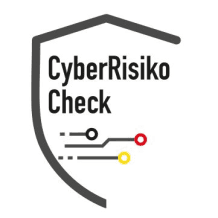Deep Packet Inspection (DPI) has established itself in recent years as a key technology in network analysis and security. This comprehensive guide delves deep into the subject and provides you with a clear overview of how DPI works, its applications, and the challenges it presents. It covers both technical aspects as well as ethical and legal considerations.
Introduction to Deep Packet Inspection
What is Deep Packet Inspection? Deep Packet Inspection is a technical method that enables a detailed examination of the traffic in a network. Not only are the header information of data packets analyzed, but also their payload – that is, the actual content of the packets. This method goes far beyond traditional packet filtering and allows for in-depth insight into the transmitted data.
What are the main components of DPI?
DPI technologies consist of several components that work closely together:
• Capture and monitoring of traffic
• Deep analysis of packet data and contents
• Application of rules and algorithms for traffic classification
• Implementation of actions based on the analysis – such as blocking, forwarding, or logging of data
Each of these steps requires powerful hardware and specialized software solutions to function in real-time.
How does Deep Packet Inspection work?
The functionality of DPI is based on analyzing each individual data packet that passes through a network. Unlike simple firewalls, which usually filter based only on IP addresses or ports, DPI analyzes the content of packets down to the application layer. Various techniques are employed:
Data extraction: When a packet arrives, its content is extracted and converted into readable formats. This may involve examining HTTP requests, files, or other protocol data.
Pattern recognition and signature comparison: Similar to antivirus programs, known patterns or signatures within the packets are searched to identify malicious code or uncover specific protocol anomalies.
Anomaly detection: Algorithms can help detect unusual behavior in the traffic that may indicate an attack or a security breach.
Measures and reactions: Based on the results of the analysis, automated responses can be initiated, such as blocking unauthorized content, generating alerts, or redirecting incoming traffic.
Applications of Deep Packet Inspection
What applications does DPI offer?
DPI is used in a variety of industries and contexts, with the areas of application being highly variable. Below is a detailed overview of the most important application areas:
1. Network Security
One of the primary application areas of DPI is network security. Through continuous inspection of data packets, security solutions can detect and block attacks such as viruses, worms, trojans, and other malware early on. DPI allows administrators to identify suspicious traffic and take appropriate measures to protect the network from malicious software.
2. Quality Assurance and Traffic Management
To ensure the performance and reliability of networks, DPI is also utilized for traffic management. Through detailed traffic analysis, network operators can identify bottlenecks and optimize the data flow. For instance, during overloads, certain data streams can be specifically prioritized or restricted, thus ensuring a balanced use of network resources.
3. Internet Censorship and Content Filtering
A controversial but widespread application area of DPI is censorship and content filtering. Governments and network operators can use DPI to identify and block unwanted content. This can occur both for reasons of national security and for the enforcement of political or moral standards. However, this area of application is not without ethical and legal issues, as it often comes with restrictions on freedom of speech and privacy.
4. Data Analysis and Marketing
Besides security aspects, DPI is also used in the field of data analysis. Companies that monitor internet traffic can gain valuable insights from the detailed analysis of transmitted data. This data helps to understand user behavior, target personalized advertising, or assess the performance of online services. It is particularly important that the collected data is processed in an anonymized and privacy-compliant manner.
5. Legal Aspects and Investigations
DPI technologies are also employed in forensic investigations and in the examination of cybercrime. Law enforcement agencies can use deep analyses to trace how attacks occur or how criminal networks operate. However, strict legal frameworks must be adhered to, to ensure privacy protection and the rule of law.
What advantages does Deep Packet Inspection offer?
The advantages of DPI are clear when it comes to security and efficiency in networks:
Comprehensive analysis: DPI not only allows for a superficial look at traffic but captures detailed contents. This provides deeper insights into network activities and makes it easier to identify threats.
Flexibility: The technology is versatile, applicable from security applications to traffic management to content filtering and forensic analysis.
Real-time responses: Since DPI operates in real-time, threats can be immediately countered and the network can be promptly protected.
Improved network control: Businesses and internet service providers can use DPI to optimize data flow and thus improve the overall performance of their networks.
What challenges and disadvantages exist?
Despite numerous advantages, there are also significant challenges:
Data protection: One of the biggest criticisms of DPI is the potential violation of privacy. By gaining insight into the complete traffic, sensitive information can be exposed. This issue necessitates strict data protection measures and clear legal frameworks.
Costs and complexity: The implementation of DPI requires highly specialized hardware and software, as well as ongoing maintenance. This can be particularly challenging for smaller companies or less developed countries.
Potential false alarms: Despite high precision, there is a risk of false alarms. Poorly configured DPI systems could mistakenly block legitimate traffic, leading to business disruptions or interruptions in the network.
Ethics and misuse: The use of DPI in the context of internet censorship or surveillance is often criticized as an infringement on individual freedoms. It must always be balanced how the technology is utilized and what consequences arise for freedom of expression and data protection.
W-Questions about Deep Packet Inspection
What is Deep Packet Inspection? The technique of Deep Packet Inspection analyzes all traffic in a network – far beyond simple filtering of header data. It allows for the detailed examination of packet contents, thereby identifying security gaps, managing traffic, or censoring content.
How does DPI work in detail? Deep Packet Inspection works by collecting each data packet, extracting the content, and conducting a comprehensive analysis using pattern recognition and anomaly detection. Based on the analysis, measures such as blocking or redirecting are triggered, allowing the system to respond immediately to threats.
When is the use of DPI sensible? The application of DPI makes sense when a high level of network security is required. Especially in areas where sensitive data is transmitted or high-volume traffic is managed, DPI can serve as an effective tool for optimizing network control and security.
Who uses Deep Packet Inspection? DPI is employed by a wide range of actors: from internet service providers and companies looking to protect their networks from cyber-attacks to governments that monitor traffic to enforce legal or security standards.
Why is DPI such a controversial procedure? Although DPI offers many advantages, especially unique insights into traffic and improved security mechanisms, it is controversial because it can potentially jeopardize user privacy and lead to violations of fundamental rights. The discussion primarily revolves around the appropriate use and legal regulation of this technology.
Historical Development and Future Perspectives
How is the technology of Deep Packet Inspection evolving?
From the earliest attempts in simple packet filters to the modern, highly complex DPI systems, the technology has developed into a
Deep Packet Inspection (DPI) in Germany: Current Developments
The importance of deep packet inspection (DPI) in Germany is continuously growing. According to recent studies by the Federal Office for Information Security (BSI), German companies are increasingly affected by cyber threats. The Bitkom Association reports that 84% of German companies have been victims of cyber-attacks in the past two years.
Particularly in the area of deep packet inspection (DPI), the following trends are evident:
Increasing investments in preventive security measures
Heightened awareness of holistic security concepts
Integration of deep packet inspection (DPI) into existing compliance frameworks
EU-Compliance and Deep Packet Inspection (DPI)
With the introduction of the NIS2 Directive and tightened GDPR requirements, German companies must adapt their security strategies. Deep Packet Inspection (DPI) plays a central role in meeting regulatory requirements.
Important compliance aspects:
Documentation of security measures
Regular review and updates
Proving effectiveness to regulatory authorities
Practical Implementation in Business Daily Life
Integrating deep packet inspection (DPI) into everyday business requires a structured approach. Experience shows that companies benefit from a gradual implementation that considers both technical and organizational aspects.
Think of deep packet inspection (DPI) as an insurance policy for your business: the better prepared you are, the lower the risk of damage from security incidents.
Further Security Measures
For a comprehensive security strategy, you should combine deep packet inspection (DPI) with other security measures:
Vulnerability Management - Systematic vulnerability management
Penetration Testing - Comprehensive security tests
Security Hardening - Employee awareness
Incident Response Plan - Preparation for security incidents
Conclusion and Next Steps
Deep Packet Inspection (DPI) is an essential building block of modern cybersecurity. Investing in professional deep packet inspection (DPI) measures pays off in the long term by increasing security and compliance.
Do you want to optimize your security strategy? Our experts are happy to advise you on the implementation of deep packet inspection (DPI) and other security measures. Contact us for a non-binding initial consultation.
🔒 Act now: Have your current security situation assessed by our experts
📞 Request a consultation: Schedule a free initial consultation on deep packet inspection (DPI)
📋 Compliance Check: Review your current compliance situation
📌 Related Topics: Cybersecurity, IT Security, Compliance Management, Risk Assessment




